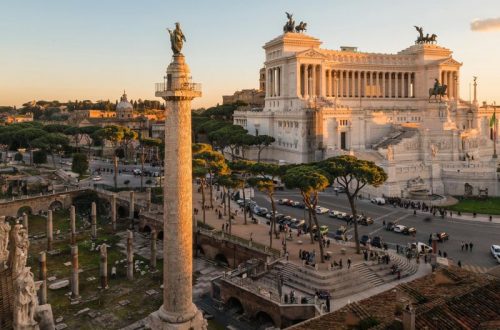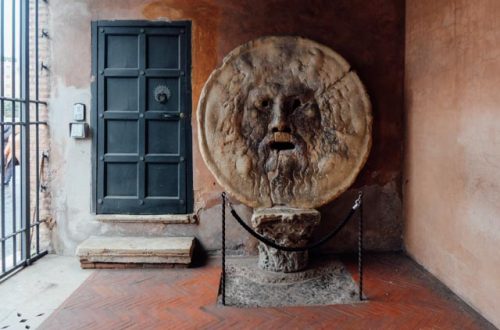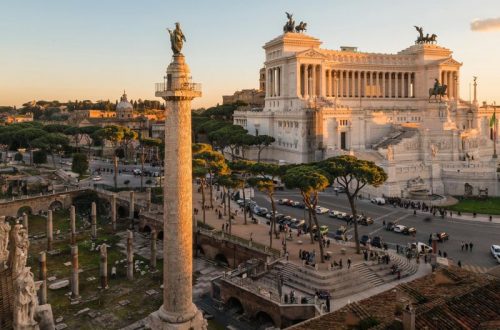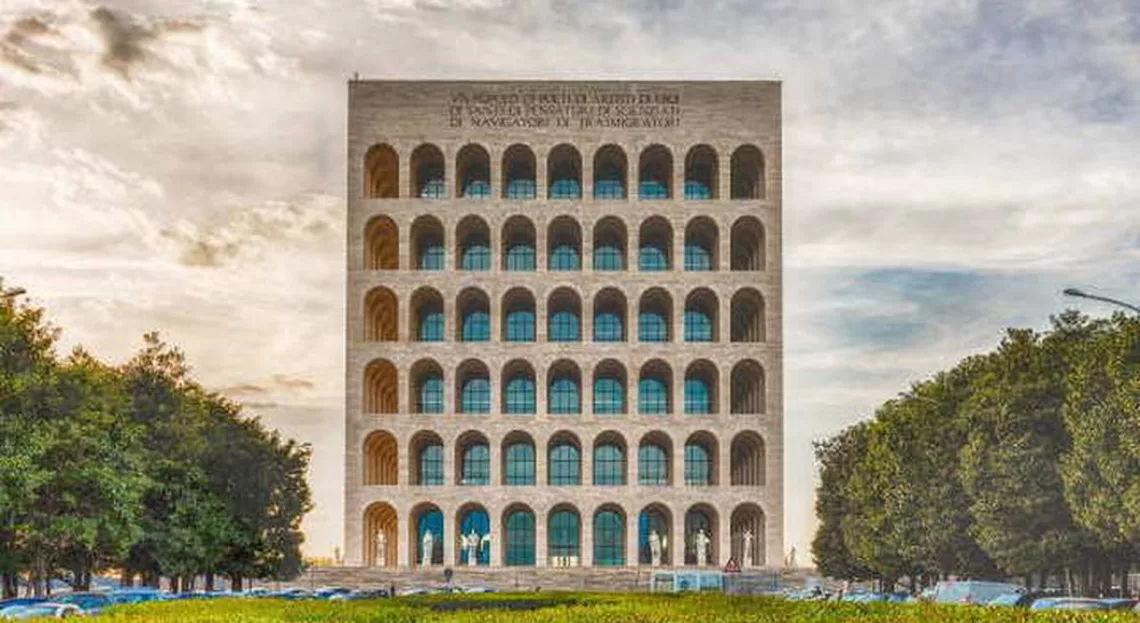
The Colosseo Quadrato
The Colosseo Quadrato: Rome’s Forgotten Monument to Modern Empire
In the Eternal City — where time stands still in the form of ancient ruins, baroque fountains, and cobbled piazzas — there is one building that feels like it was dropped from another world. Stark, geometric, and otherworldly, the Colosseo Quadrato, or “Square Colosseum,” rises from the landscape of southern Rome like a ghost of a future that never fully arrived.
Officially known as the Palazzo della Civiltà Italiana, this imposing structure is one of the most fascinating — and polarizing — pieces of architecture in Rome. It doesn’t try to charm. It doesn’t blend in. And that’s precisely why it demands attention.
A Monument Born of Ambition
The story of the Colosseo Quadrato begins not in the age of emperors, but in the 1930s, under the authoritarian shadow of Benito Mussolini. Italy’s Fascist regime was not just about control — it was about spectacle, and architecture played a central role in the propaganda machine.
The Square Colosseum was conceived as a centerpiece for the Esposizione Universale Roma (EUR) — a planned World’s Fair that was to celebrate twenty years of Fascism in 1942. The fair never happened, halted by the chaos of World War II. But the architecture remained, frozen in time.
Designed by Giovanni Guerrini, Ernesto Bruno La Padula, and Mario Romano, the building is a modern echo of the ancient Roman Colosseum, stripped of ornament, symmetry perfected. It’s 216 identical arches march across six levels, forming a cube so precise that it feels more like a concept than a building. Its stark travertine shell gleams under the Roman sun, at once beautiful and unsettling.
Power Carved in Stone
On the façade, an inscription looms above the arches:
“Un popolo di poeti, di artisti, di eroi, di santi, di pensatori, di scienziati, di navigatori, di trasmigratori.”
“A people of poets, of artists, of heroes, of saints, of thinkers, of scientists, of navigators, of migrants.”
It’s grand. It’s poetic. And it’s propaganda. Like the building itself, these words were meant to evoke pride, permanence, and power — not of ancient Rome, but of the new empire Mussolini sought to build.
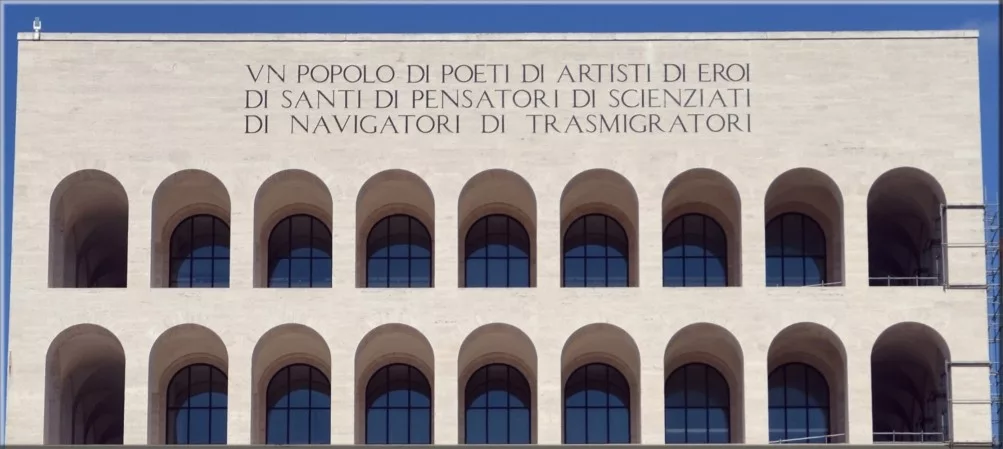
Around the base of the building, 28 statues represent Roman virtues and archetypes — athletes, workers, intellectuals — carved in perfect, expressionless symmetry. They are men without stories, bodies without motion. It is beauty rendered static, frozen like the ideals it was meant to immortalize.
From Political Symbol to Cultural Icon
For decades after the war, the EUR district — and the Colosseo Quadrato — was largely forgotten. It had been built to impress, but carried the uncomfortable weight of its political origins.
Yet in recent years, the building has found new life.
In 2015, Italian fashion house Fendi made the Colosseo Quadrato its global headquarters. With careful restorations, the once-empty interior now hosts exhibitions and cultural events, transforming the space from a relic of Fascism into a canvas for modern creativity. It’s a controversial transformation, but a telling one: Rome doesn’t erase its history — it lives with it, reinvents it.
Visiting the Colosseo Quadrato
Walking through EUR today feels like stepping onto a different continent — clean boulevards, monumental buildings, and a sense of scale you won’t find in Rome’s historical center. But it’s also quiet, even serene. Tourists are few. Locals jog past on their way to EUR Lake or sip coffee in minimalist cafés tucked between marble giants.
The Colosseo Quadrato dominates the skyline here, but not aggressively. It sits in silence, a monument without a crowd.
For photographers and design lovers, it’s a dream: perfect lines, crisp light and shadow, and near-total symmetry. The building is stunning at sunset, when the golden light slides through the arches and washes the façade in warm glow.
A Fascinating, Flawed Beauty
To visit the Colosseo Quadrato is to confront a Rome that most never see — a Rome of modern ambition, of ideological architecture, of power made stone. It challenges the romantic postcard version of the city and reminds us that history doesn’t always look like ruins. Sometimes, it’s smooth, white, and uncomfortably new.
You don’t need to admire the politics behind it to appreciate its artistry. Perhaps the most powerful thing about the Colosseo Quadrato is that it invites you to ask: What should we remember, and how?
This building doesn’t answer the question. It simply waits — quiet, monumental, and unblinking — for each visitor to decide for themselves.
WHERE:
![]()


